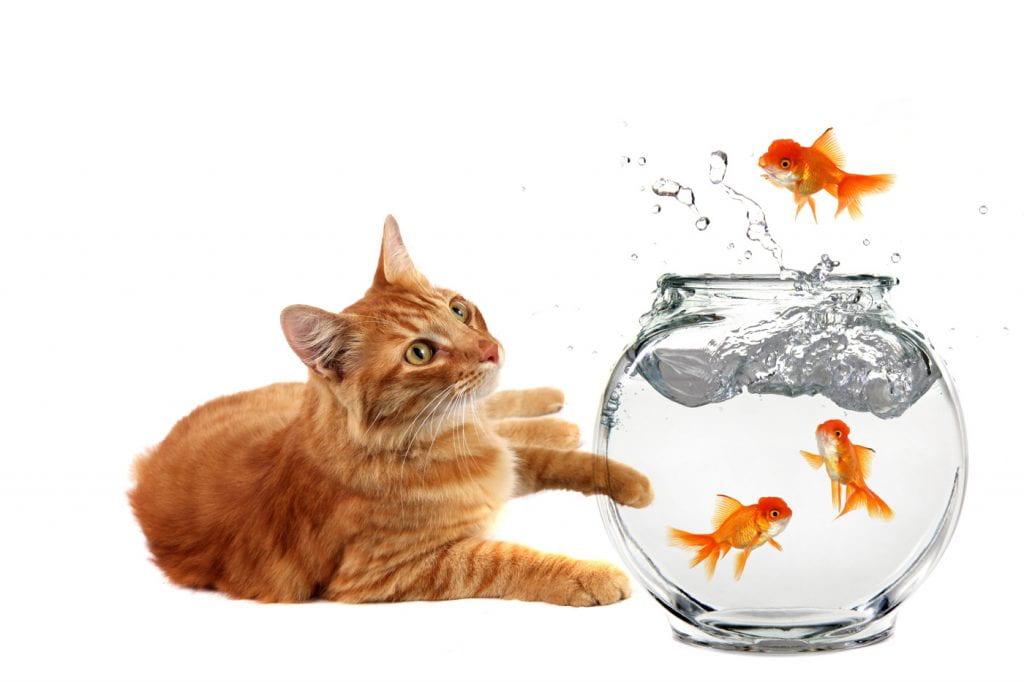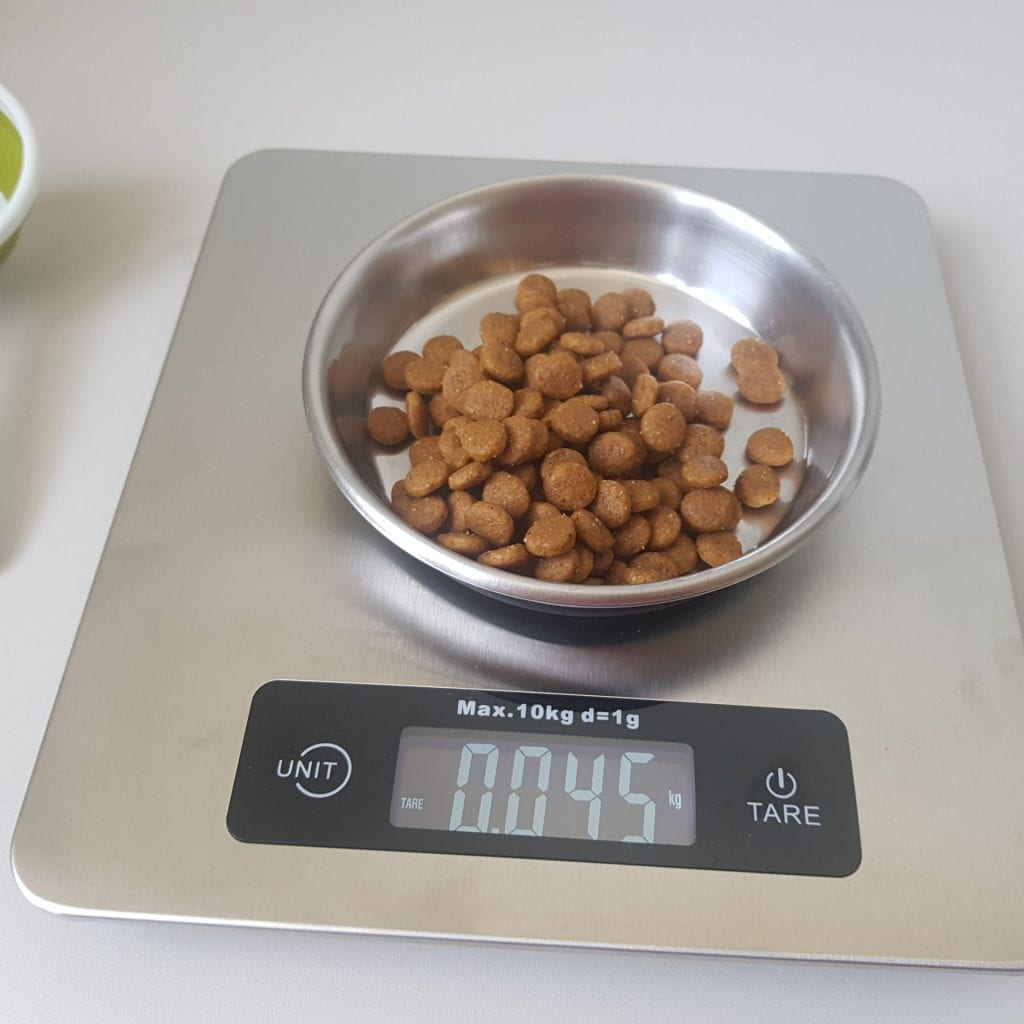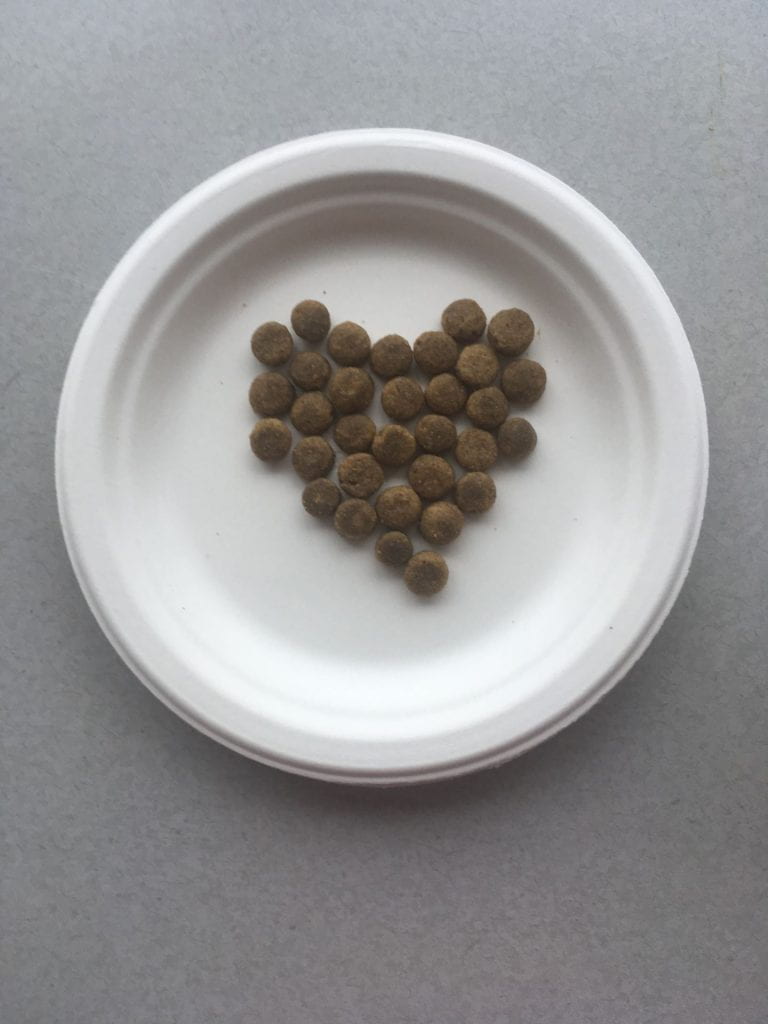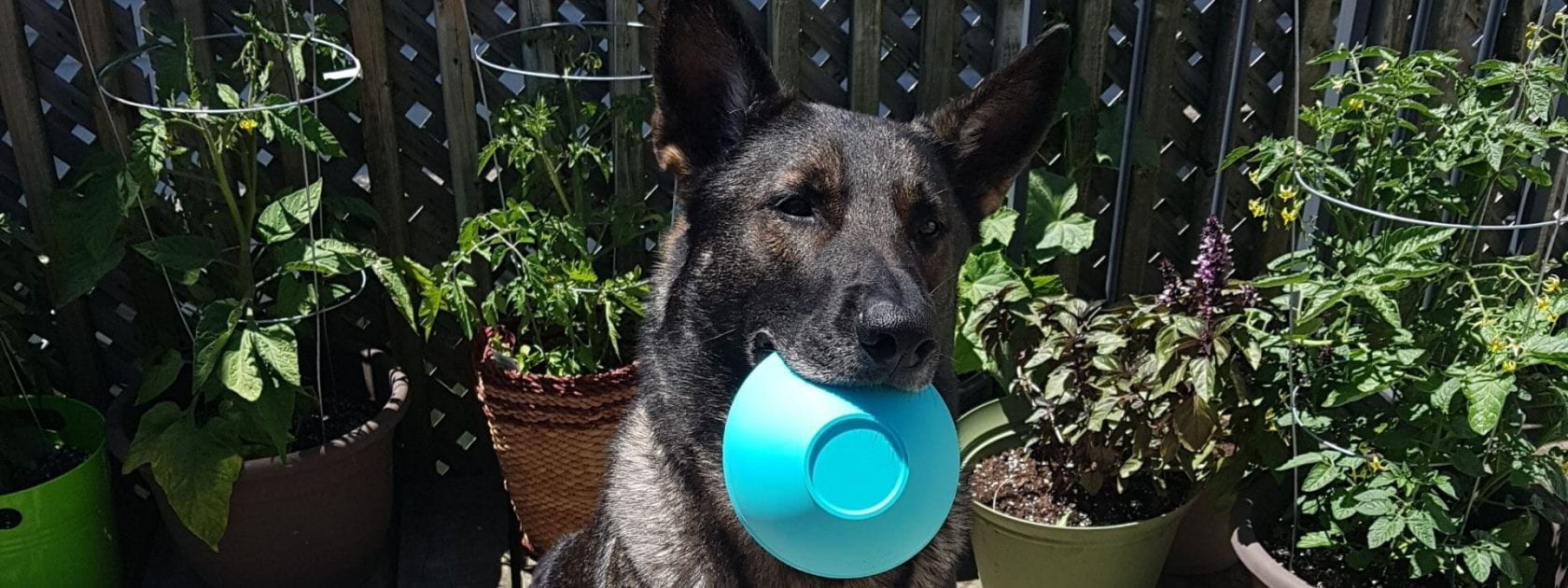4. Omega 3 fatty acids may be beneficial for overweight cats, and algae oil is an environmentally sustainable alternative to marine fish oil for Omega 3s.
Dr. Camila Baptista da Silva, ECVCN Resident at Ghent University, began her mini review on omega 3 fatty acids and overweight cats, by reminding us that 60% of cats in North America are estimated to be overweight or obese.
She went on to discuss how obesity leads to low grade chronic inflammation throughout the entire body, and how obese cats may develop diabetes as a result. For this reason, cats are considered good models for studying diabetes in humans. However, cats will not develop other co-morbidities or health conditions related to obesity that humans might, such as cardiovascular disease. Dr. Baptista da Silva discussed that this is due to differences in adiponectin release between the two species.
“In both lean and obese cats, the amount of adiponectin would be low. Showing us that cats in general do have a lower ability to process glucose, and a higher predisposition to obesity, insulin resistance and visceral obesity-induced lipid metabolism abnormality.”
Dr. Baptista da Silva cited research stating that insulin sensitivity would be decreased by 50% in obese cats versus lean cats. She mentioned that “When we think about obesity, our aim is to decrease the inflammation that is causing the insulin resistance. We need some strategies to modulate adipokine secretion and synthesis. If we use omega 3-fatty acids, in the obese state, what we are going to see is that there is going to be a decrease in the inflammatory adipokines and an increase in the anti-inflammatory adipokines…. In the end, we are going to have a lower state of inflammation in the body and increased insulin sensitivity.”

She presented research from obese human and rodent models that demonstrated how omega 3 fatty acids would increase adiponectin and decrease leptin from circulation. All the data shows us that omega 3 fatty acids attenuate inflammation.
Dr. Baptista da Silva’s presentation was followed by Dr. John Bauer, Professor Emeritus at Texas A&M, who asked the question: “Are our global fish stocks environmentally sustainable to meet the global demands for the long chain omega-3 fatty acids?” He suggested that “The availability of algae sources, is potentially a suitable alternative to providing long chain omega 3s [that are in such high demand worldwide]”
Dr. Bauer presented the results of a dose response study, showing that algae oil has equivalent plasma enrichment to marine fish oil in dogs and cats. He said this oil was safe and palatable for dogs and cats in various stages of their life. Overall demonstrating that this is a waste-free and sustainable alternative to marine fish oil.
5. Smart feeders and digital scales are considered valuable by pet owners during feline weight loss trials and may lead to significantly higher weekly weight loss.
Dr. Barr Hadar, PhD candidate at the Ontario Veterinary College, gave a poster presentation highlighting the use of home pet technology in multiple cat household weight loss programs in the US and Canada.
The objective of this research was to determine whether a home pet technology ecosystem is an effective tool in a feline weight loss program in multiple cat households.
A randomized clinical trial was performed, comparing two weight loss intervention groups for 12 weeks. The two groups consisted of a standard weight loss group and a technology-enhanced weight loss group. The technology-enhanced group was provided with a pet health technology ecosystem, which included a smart feeder, activity monitor, pet treat camera and digital scale.

Following the trial, pet owners reported high satisfaction with the pet health technology ecosystem. Of the tools provided, the smart feeder was found to be the most valuable by pet parents, followed by the digital scale.
Additionally, there was significantly higher weekly weight loss reported in the technology group (0.694% weekly), as compared with the traditional group (0.175% weekly).
Although the sample size was small, this preliminary investigation suggested that a pet health technology ecosystem may be an effective and practical tool in cat obesity.
6. Many pet parents are not receiving clear direction regarding weight loss and weight management, after being told that their pet is overweight or obese.
Kat Sutherland, PhD candidate at the Ontario Veterinary College, started her poster presentation by stating that “There is evidence to suggest that vets may feel uncomfortable having conversations about pet weight with their clients, but we know that weight maintenance is important to the overall health of our cats and dogs”.
Her research seeks to explore communication methods that may help optimize weight conversations between vets and clients, specifically related to discussions about obesity. However, in order to do this, we must first know what is happening between clients and members of the veterinary health care team, and what might be missing when it comes to obesity related discussions.
Working from a data set of just over 900 recorded vet-and-client interactions from 60 different veterinarians, Kat pulled 600 videos that included any conversation with a mention of ‘weight’. In her poster presentation she discussed results from the first 245 videos she finished coding.
Of the coded videos, 37% of conversations were preventive or occurring when the pet was already at a healthy weight. Furthermore, 33% were related to the pet being overweight or obese, and 16% were related to an illness or medication.
The remaining 13% had substantial conversations about weight, the pet was weighed, or the pet’s weight was stated.
Additionally, she found that of the 82 conversations related strictly to obesity, only 59% provided information to the client of how to go about weight management. While only 39% gave a reason for why healthy weight is important.
Kat stated “That’s leaving a large gap in information provided to clients. We see that there is are a number of clients who may have been told in that appointment that their pet is overweight, but then they leave the exam room without any specific direction from the veterinary team on what to do about that issue. Similarly, there is a clear gap with clients not being sold on the importance of managing their pets’ weight.”

She concluded by saying “We need to further our understandings of the barriers that might exist for both veterinarians and clients so that we can better facilitate these weight discussions moving forward.”
7. Building bridges within the world of animal nutrition is important!
The goal of the Global Animal Nutrition Summit was to bring together nine international animal nutrition organizations for the first time. The organizers wanted to create an inclusive global venue for everyone passionate about animal nutrition to discuss their research and learn! This included veterinarians, veterinary nutritionists, veterinary technicians specialized in nutrition, animal scientists, and comparative animal nutritionists.
As someone who has attended conferences aimed at veterinarians and animal scientists, it was great to have everyone altogether in the same virtual space. I believe that this event helped to increase the visibility of animal nutrition that is being done globally and helped to disseminate findings to a larger audience. Additionally, I believe that this event opened the door for future collaboration.
8. Nutrition helps improve lives!

Written by Alexandra Rankovic BScH, MSc, PhD Candidate, Department of Biomedical Sciences, Ontario Veterinary College, University of Guelph.
Reviewed by Adronie Verbrugghe, Sarah Abood and Shoshana Verton-Shaw.


